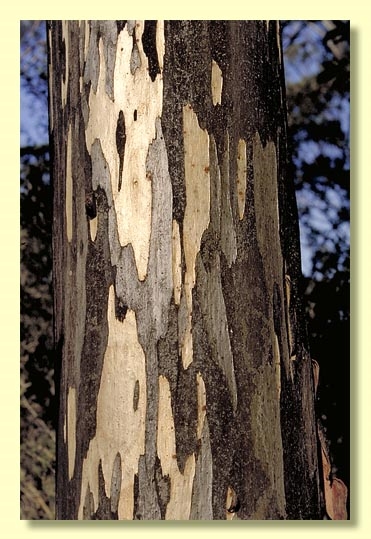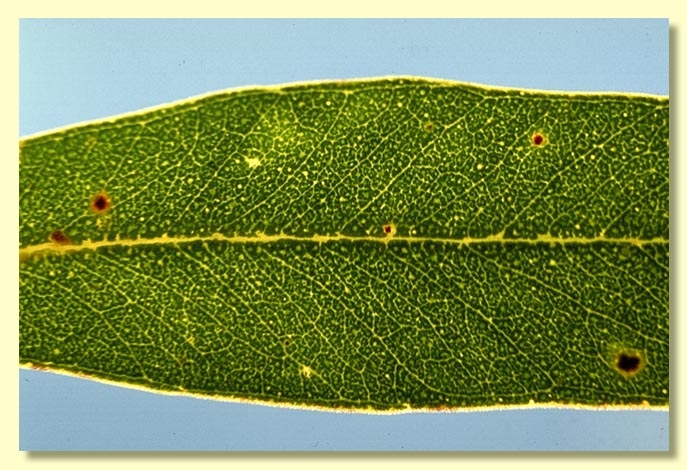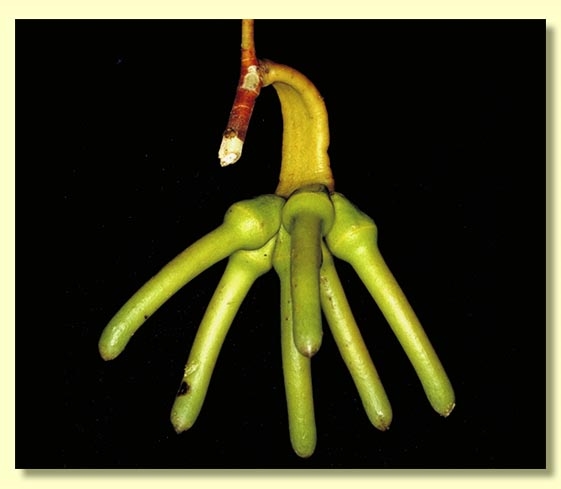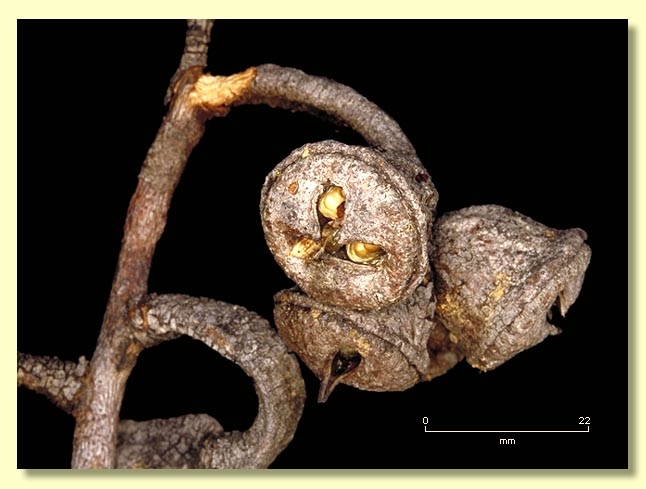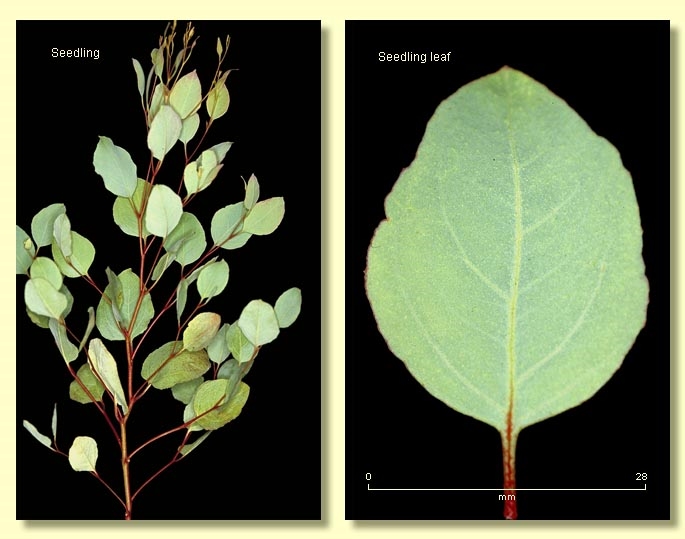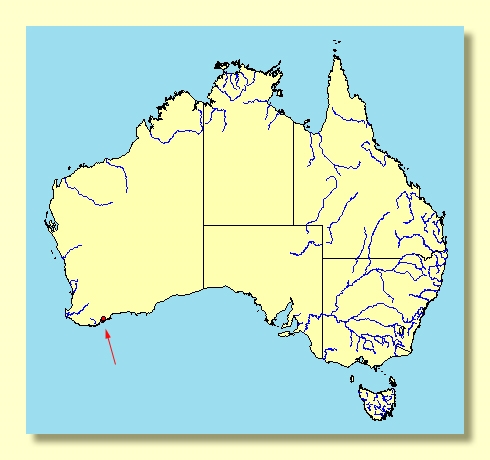Euclid - Online edition
Eucalyptus newbeyi
Eucalyptus | Symphyomyrtus | Bisectae | Hadrotes | Lehmannianae | Liberae
T: junction of Susetta R. and Fitzgerald R., W.A., 119°27'E, 34°S, 13 July 1970, A.S.George 10002; holo: PERTH.
Bark smooth throughout, mottled yellow-brown and grey to creamy yellow, shedding in flakes.
Branchlets lacking oil glands in the pith.
Juvenile growth (coppice or field seedlings to 50 cm): not seen.
Adult leaves alternate, petioles 0.5–1(1.5) cm long; blade narrowly lanceolate to narrowly elliptical, 4–8 cm long, 0.5–1.5 cm wide, base tapering to petiole, margin entire, apex pointed, rarely rounded and apiculate, side-veins at an acute or wider angle to midrib, reticulation moderate to dense, broken, intramarginal vein close to margin, oil glands obscure or scattered, very irregular, island and intersectional.
Inflorescence axillary unbranched, peduncles down-turned, strap-like, 3–5.5 cm long, buds usually 7 per umbel, rarely 3 or 9, sessile to subsessile. Mature buds elongated, 5.2–6 cm long, 1.1–1.6 cm wide, scar present (outer operculum shed early), operculum horn-shaped, ca 3–4 times as long as the hypanthium, dilated basally, smooth, stamens erect, anthers narrowly oblong, versatile, dorsifixed, dehiscing by longitudinal slits, style long and straight, stigma rounded, locules 3, the placentae each with 6 vertical rows of ovules. Flowers yellowish green.
Fruit on down-turned peduncles, sessile, campanulate to obconical, 1–2.7 cm long, 1.8–2.8 cm wide, dehiscing by elliptical holes formed when the 3 valves split along the sutures but remain connected by the style base, however this connection eventually weathers and the holes coalesce, disc covering the valves.
Seeds black, 1.5–4 mm long, ovoid to angularly so, dorsal surface shallowly reticulate, a narrow flange on at least part of the margin, hilum ventral.
Cultivated seedlings (measured at node 10): cotyledons Y-shaped (bisected), robust; stems rounded in cross-section, scabrid; leaves always petiolate, opposite for 4 to 6 nodes then alternate, deltoid to ovate, 3.5–5 cm long, 2.5–4.5 cm wide, green, sparsely scabrid, margin usually entire and sometimes undulate. Scabridity due to bristle-glands.
Flowering time unknown.
A mallet endemic to Western Australia, known only from two areas, near Beaufort Inlet and Fitzgerald River National Park. The bark is smooth, the adult leaves glossy, green and the large non-warty buds and fruit are easily seen in the crown; stamens are long and yellow-green.
Eucalyptus newbeyi belongs in Eucalyptus subgenus Symphyomyrtus section Bisectae subsection Hadrotes because the cotyledons are coarsely bisected, buds have an operculum scar, a long (inner) operculum and erect stamens, fruit are large, thick-rimmed and held rigidly. There are 12 species in subsection Hadrotes, two species (E. macrandra, E. cornuta ) have oil glands in the pith whilst 10 species lack these oil glands. Together these 10 species form series Lehmannianae, a group further characterised by having scabrid seedlings and fruit with exserted valves that remain fused at their tips after seed is shed, a feature shared with the more distantly related E. cornuta.
Of the ten species in series Lehmannianae four, E. newbeyi, E. burdettiana, E. talyuberlup, and E. megacornuta, have buds and fruit in each umbel basally free (subseries Liberae) whilst the other six species, E. lehmannii, E. conferruminata, E. arborella, E. mcquoidii, E. sinuosa and E. retusa have the buds (and fruit) in each axillary cluster fused basally (subseries Conjunctae). The scabridity of the seedling leaves of these ten species is due to emergent multicellular oil glands.
E. newbeyi and E. megacornuta are both mallets (non-lignotuberous), the former with smooth buds 5.2-6 cm long and the latter with extremely warty large buds 3-6 cm long. E. megacornuta occurs in the Ravensthorpe and Whoogarup Ranges. The other two species in series Liberae, E. burdettiana, with almost parallel-sided, slightly warty opercula, and E. talyuberlup, with smooth opercula, are both mallees (lignotuberous).


